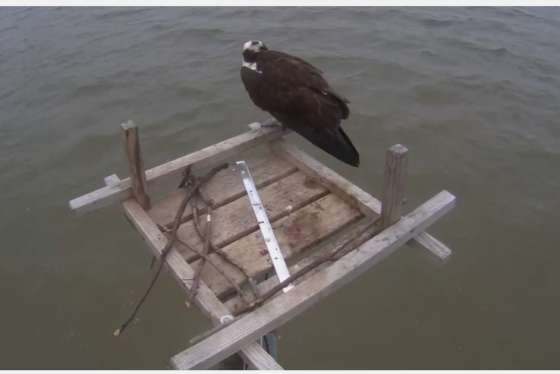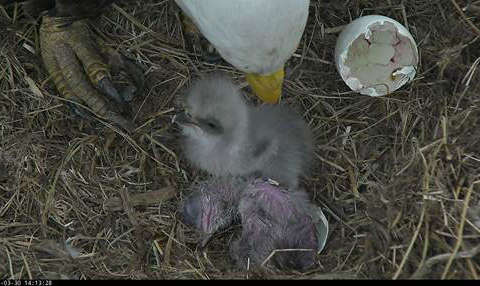Watch a livestream of the National Arboretum eagle nest on the American Eagle Foundation’s website. Check out a livestream of D.C.’s other famous eagle pair at the D.C. Police Academy on the Earth Conservation Corps’ website.
WASHINGTON — There’s a disclaimer posted with one of D.C.’s live-streaming bald eagle cameras, warning that with wildlife anything can happen, including such difficult-to-watch things as sibling rivalry.
“I remember last year, the chick that hatched first was pretty aggressive. And every time one of the adults would show up with food, it would usually peck the other one in the head – knock it silly for a bit – then eat all it wanted,” said Dan Rauch, D.C. Department of Energy and Environment wildlife biologist.
Rauch was referring to chicks that hatched at the U.S. National Arboretum. The two chicks that hatched earlier this week emerged from their shells within a day of one another, and that could help prevent dangerous bullying.
The eagle’s nest at the D.C. police academy has only one chick. All the newly hatched birds appear to be thriving.
After chicks are hatched, bald eagle parents tend to share food-collecting duties equally, but the females are mostly responsible for sitting on the nest during incubation.
At the Arboretum, The First Lady ruled the roost when this year’s chicks hatched.
“I can tell just by the width of her talons and the size of them that that’s the female,” Rauch said, adding that females tend to be 25 percent larger than the males.
“She’s big. She’s got an 8-foot wingspan. He’s probably more somewhere around 7, 7 1/2.”
Watching the eagle cameras, you might notice the parents avoid hurting the delicate chicks by curling their razor-sharp talons into a ball and walking on their knuckles.There’s also no danger of the chicks getting cold: Females’ body temperature rises to about 100 to 105 degrees during incubation.
“The females are pretty hot. They’re like a little furnace,” Rauch said.
That created somewhat of an inferno for the police academy chick when its mother continued incubating the second egg long after its failure to fully hatch and the surviving chick was multiple days old.
“You can see this [chick] thinks it’s too warm sometimes, it pops its little head out” from underneath the mother, Rauch observed with a laugh.
Rauch discovered a third nesting pair of bald eagles along the Anacostia River on the border between D.C. and Maryland. It’s located in woods in the middle of a blue heron rookery where about 15 blue heron nests are clustered.
There is no camera at that third location.









